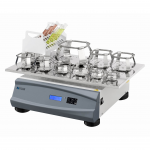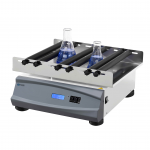De-staining Shaker FM-DS-A100
De-staining Shaker FM-DS-A100 has microprocessor PID controlled system with LED display. Features orbital oscillation mode, single shaft balance drive, 8 segment adjustable program controller and independent over speed acoustic and visual alarm. It comes with shaking speed range of 30 to 300 rpm and 20 mm vibration range. Designed with ABS plastic body and stainless steel tray. The unique design of speed monitoring circuit provides long working life under repeated and continuous use. Used for different applications of electrophoresis gel, dyeing or de-staining of coomassie blue, dyeing and development of silver nitrate and X-ray negative film, disposal of cellulose membrane after electrophoresis transfer, molecular hybridization and dyeing or cultivation of antigens and antibodies.





